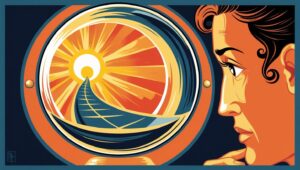Artificial Intelligence (AI) is the workplace buzzword of the decade—hailed as both a revolution and a reckoning. Will it replace jobs? Maybe. Will it transform work? Absolutely. But here’s the big question: Transform it into what?
For too long, our organizations have been running on outdated models—relics of the Industrial Revolution. The 9-to-5 grind, hierarchical structures, and obsession with efficiency were designed for factory floors, not for the knowledge economy where creativity, collaboration, and innovation reign supreme. Even the worker rights we take for granted—breaks, shifts, and weekends—were hard-won in manufacturing environments, not tailored to the needs of modern, human-centric workplaces.
The problem? These structures don’t align with how human brains thrive. Creativity and collaboration require safety, balance, and autonomy—not assembly-line rigidity. And when we pile endless tasks onto shrinking teams without rethinking how the work is done, we don’t just create inefficiency; we create burnout.
Let’s stop trying to do more with less and start using AI as a partner to help us do better with what we have. Together, we can redesign work to prioritize not just productivity, but also well-being and flourishing.
Understanding Burnout: The Modern Epidemic
Burnout is often framed as a personal failure to “manage stress,” but let’s be honest: it’s a systemic issue. It’s what happens when antiquated ways of working clash with the realities of modern life.
Burnout isn’t just about long hours—it’s about:
- Excessive Workloads: Downsizing often leaves fewer people to carry more weight without rethinking workflows.
- Lack of Autonomy: When every decision requires layers of approval, employees lose their sense of ownership.
- Inefficient Processes: Outdated systems drain time and energy, leaving little room for creative or strategic work.
At its core, burnout arises when people are stuck in a constant threat state. When the brain perceives unrelenting pressure, it shifts into survival mode. In this state, creativity, problem-solving, and collaboration—the very things modern workplaces demand—become nearly impossible.
How AI Can Help Us Redesign Work
Enter AI—not as a replacement for people, but as a tool to support them. By leveraging AI thoughtfully, we can begin to address the systemic issues driving burnout and rethink the very structure of work:
- Reimagine Workflows: AI can analyze and streamline processes, eliminating unnecessary steps and freeing people to focus on meaningful, creative tasks.
- Redesign Workloads: Predictive analytics can help distribute tasks more equitably, preventing overburdened employees from hitting their breaking points.
- Create Space for Autonomy: AI can take over repetitive tasks like scheduling, data entry, or reporting, giving employees more time to make decisions and innovate.
- Support Well-Being: AI-powered tools can monitor team dynamics, flag early signs of burnout, and offer real-time insights that help leaders intervene before it’s too late.
Practical Applications: Moving Beyond Theory
To start creating healthier workplaces, organizations can implement:
- AI-Driven Process Reviews: When downsizing happens, AI can help leaders identify which tasks can be automated or restructured, ensuring the work left behind is manageable and meaningful.
- Smart Workload Management Tools: AI-powered platforms like Asana or Microsoft Viva can identify bottlenecks and help balance workloads across teams.
- AI-Powered Wellness Platforms: Apps that offer personalized stress management techniques or track well-being metrics can empower employees to take control of their mental health.
- Chatbots for Routine Queries: Reduce stress on HR teams by automating answers to common questions, freeing them to focus on strategic, human-centric initiatives.
Tackling the Root Cause: A Cultural Reset
AI alone won’t solve burnout. To truly create workplaces where people thrive, we need to challenge the cultural and systemic norms we’ve inherited:
- Let Go of the Factory Model: We need to rethink the outdated systems we’re clinging to—like rigid schedules, unnecessary meetings, and a relentless focus on efficiency at the expense of creativity.
- Support the Human Brain: Productivity shouldn’t come at the cost of well-being. Humans thrive when they feel safe, supported, and empowered to think creatively and collaborate meaningfully.
- Redefine Success: Instead of measuring success by output alone, let’s design systems that value balance, innovation, and sustainable performance.
The Time for Change Is Now
Burnout doesn’t have to be the price of success. With AI as our partner, we have an unprecedented opportunity to redesign work to better serve people and organizations alike. Let’s stop patching cracks in a crumbling foundation and start building workplaces that align with how humans thrive.
What’s one way you think AI could make your workplace healthier and more human? Share your thoughts in the comments or reach out—I’d love to explore how we can create systems where people flourish.



